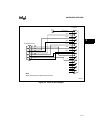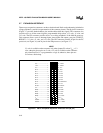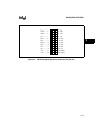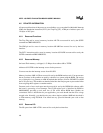
4-1
4
CHAPTER 4
INTRODUCTION TO THE SOFTWARE
The Intel 186 EC/EB Evaluation Board uses an Embedded Controller Monitor (ECM) written for
the 80x186 family of 16-bit microprocessors. This monitor supports basic debug facilities
(LOAD, GO, STEP, etc.) in the user’s target system. The ECM is broken into two independent
programs. One of these (iRISM-186) executes in the evaluation board and the other (iECM-86)
executes in an IBM PC or BIOS-compatible computer. These two programs communicate via an
asynchronous serial channel using a binary protocol defined specifically for this application.
The partitioning of the ECM into two separate programs supports a number of goals:
• The system is easy to adapt to a new target because the code that runs in the target is very
simple and small.
• The feature set of the user interface is not limited by the resources of the target, since the
user interface is implemented in the host PC.
• Concurrent operation of the ECM and the target system is easily achieved. This allows you
to interrogate and (carefully) modify the state of the target system while it is running.
This chapter describes the user interface provided by the iECM-86, the interface between this PC-
resident software and the target-resident software, and the structure of the software in the target.
The board uses the internal 80x186 EB/EC serial port for host communications.
The iECM-86 software was created by Intel to support users of the 80x186 architecture and is
placed in the public domain with no restrictions or warranties of any kind.
4.1 SOFTWARE FEATURES
The iECM-86 software has the following features:
• Sixteen software execution breakpoints
• Concurrent interrogation of target memory and registers
• Supports BYTE, CHARACTER, WORD, STRING, DOUBLE WORD, and REAL variable
types
• Supports LOAD, SAVE, LIST, LOG, and command INCLUDE files


















